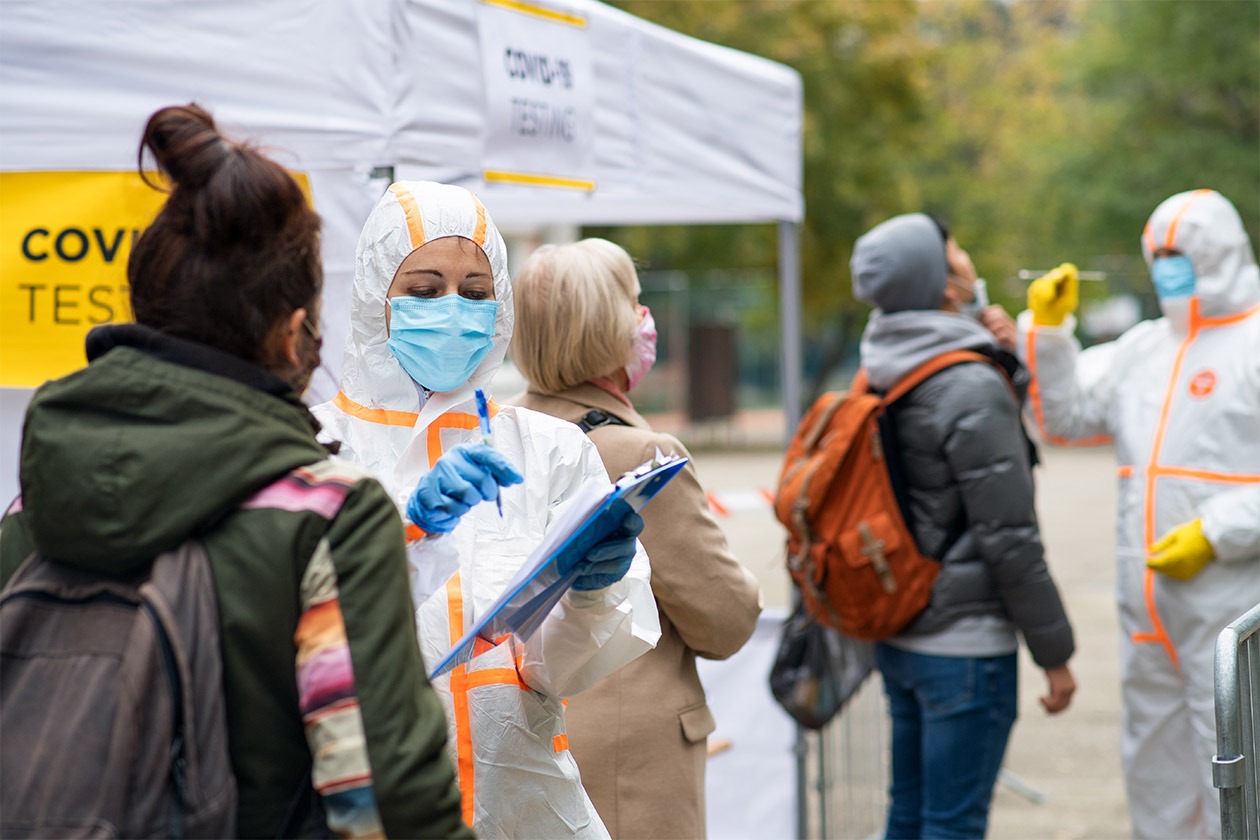
March 11, 2021
In April 2020, as evidence mounted that the COVID-19 pandemic was having a devastatingly disproportionate impact on New York’s Black and Hispanic communities, Governor Andrew M. Cuomo commissioned the University at Albany (UAlbany) to closely examine the nature and causes of this unfolding public health crisis.
This data brief from the Rockefeller Institute supports UAlbany’s “Eliminating Minority Health Disparities in a 21st-Century Pandemic” project by examining the socioeconomic and occupational factors underlying disparate health outcomes for Black and Hispanic New Yorkers from the COVID-19 pandemic.
Racial and ethnic disparities in health outcomes and healthcare access have proven extremely persistent in the US and have generated substantial research and policy interest in improving health and healthcare. The severity and unequal death toll of the COVID-19 pandemic has bolstered calls to address the systemic and pervasive health disparities that routinely confront Americans of color. People of color in the US, particularly Black and Hispanic Americans, have lower life expectancy and higher rates of chronic disease and premature death. While some health gaps have begun to close over time, others including gaps in HIV infection, infant mortality, diabetes, and obesity have remained substantial.
Strategies to address health inequalities are complicated. It is impossible to disentangle racial and ethnic inequalities in health outcomes from other forms of social inequality—most notably income and education—that persist in the US due to a history of discriminatory laws, norms, and systemic racism that influenced where people of color could work, live, and learn. Health is not only highly correlated with race and ethnicity but also with both education and income. Wealthier and more highly educated individuals both report better health and having a longer life expectancy. Health and life expectancy also differ over fairly small geographies.
The goal of this data brief is to document a set of racial and ethnic disparities in health and the social determinants of health that existed in New York State before the COVID-19 pandemic was first confirmed in March of 2020. To do so, we bring together a variety of data sources including the Integrated Public Use Microdata Series (IPUMS) harmonized Current Population Survey, Decennial Census, American Community Surveys, the Behavioral Risk Factor Surveillance System, the Centers for Disease Control (CDC) and Prevention Mortality data, and O*Net job characteristics database, as well as COVID-19 hospitalization and mortality data from the CDC, New York State, and New York City.
First, we give an overview of racial and ethnic differences in COVID-19 cases, hospitalizations, and deaths for the nation as a whole and for New York State and New York City specifically. We follow that with a brief discussion of the CDC’s recognized social determinants of health and then provide specific statistics on household characteristics, neighborhood characteristics, education, job characteristics, and health conditions and healthcare access that may have contributed to racial and ethnic disparities in the impact of COVID-19 in New York.
Visit UAlbany’s “Eliminating Minority Health Disparities in a 21st-Century Pandemic” project page.